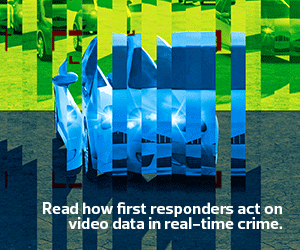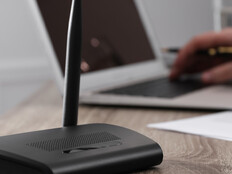2. What Infrastructure Is Required to Support IP Cameras?
IP cameras operate over the same types of data networks used by other digital technologies. As cities deploy cameras in city-owned facilities, they can usually connect the devices to existing networks without building out any new infrastructure. The single cable connecting a camera to the network provides audio, video and pan-tilt-zoom control. On networks offering Power over Ethernet, the cable also provides power to the camera, reducing wiring requirements. In locations where existing networks are not accessible, some camera models support Wi-Fi or cellular connectivity.
MORE FROM STATETECH: FirstNet Authority launches virtual training lab for public safety.
3. What Added Benefits Do IP Cameras offer?
IP cameras provide a wealth of intelligence capabilities, both in the camera itself and through back-end video surveillance solutions. These platforms automate much of the mundane work of surveillance centers — providing object detection, face recognition, boundary-crossing detection and other vital capabilities — which reduces the number of staff required to operate the surveillance center and increases the effectiveness of monitoring.
4. How Do IP Cameras Integrate with Other Systems?
The digital platforms powering IP cameras provide application programming interfaces that allow tight integration with other digital systems. Cities can rapidly push video feeds to first responders as they approach dangerous situations, and also integrate with building automation systems, access control systems and other elements of critical infrastructure to streamline surveillance workflows.
IP-based surveillance systems also provide capabilities that go beyond the world of security, allowing operators to rapidly detect safety hazards, recognize vehicles entering facilities and perform many video-based tasks.
DISCOVER: How state and local authorities can enhance their use of data analytics.
5. Do IP Cameras Offer a High Level of Cybersecurity?
IP cameras offer better security than older cameras that use analog signals, which are subject to interception and tampering by anyone who gains access to the physical cables used to route video back to the monitoring center. IP cameras contain strong encryption technology to protect video signals from prying eyes and offer multilevel user access control that can customize access for each user of the system.











